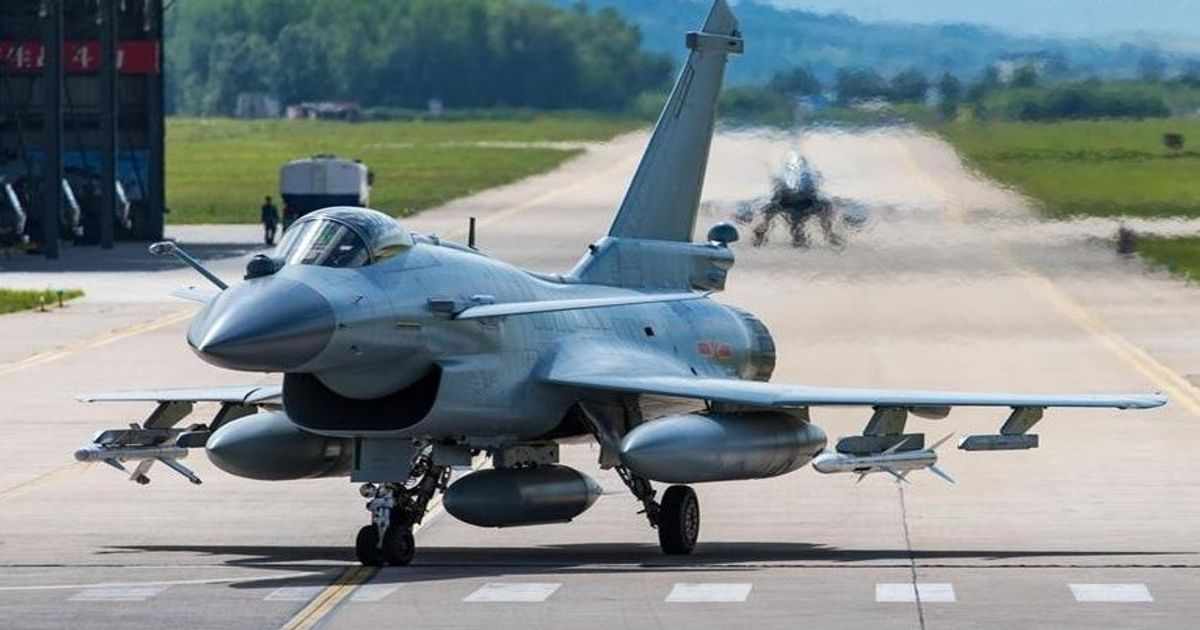SOURCE: AFI


In a recent interview with Pakistani media, Air Commodore Khalid Farooq (Retd) provided an in-depth overview of the Pakistan Air Force’s (PAF) current aircraft inventory, advanced technologies, and strategic capabilities, asserting a technological advantage over India’s air forces, particularly in first-look, first-shot capabilities. His remarks highlighted the PAF’s modern fighter jets, including the Chinese-made J-10C and the indigenously co-developed JF-17 Thunder Block III, positioning them as superior to India’s recently acquired Rafale jets.
Air Commodore Farooq revealed that the PAF currently operates approximately 400 aircraft, with a significant portion being combat-capable fighter jets. This figure aligns with estimates suggesting the PAF maintains around 418 jets, ranking it sixth globally in combat aircraft numbers, according to posts on X. In contrast, he noted that the Indian Air Force (IAF) possesses around 1,150 aircraft, nearly three times the PAF’s strength, a numerical disparity consistent since the 1965 and 1971 wars. “India has always had more numbers than us… We can never match the numbers, nor do we want to. We match them with passion, better training, and superior technology,” Farooq emphasized.
Acquired from China two years ago, the J-10C is a 4.5-generation, single-engine, multirole fighter jet. Farooq described it as “state-of-the-art,” equipped with advanced avionics, an Active Electronically Scanned Array (AESA) radar, and long-range missiles like the PL-15E. He claimed the J-10C provides the PAF with “first-look, first-shot” capability, enabling it to detect and engage enemy aircraft at greater distances than India’s Rafale. Pakistan has inducted at least 20 J-10CEs, with plans to acquire up to 50, according to defence reports.
A joint venture between Pakistan Aeronautical Complex (PAC) and China’s Chengdu Aircraft Corporation (CAC), the JF-17 Block III is a lightweight, 4.5-generation multirole fighter. Farooq, who recently interviewed JF-17 pilots at an operational base, praised its advanced KLJ-7A AESA radar, digital fly-by-wire system, and PL-15 missile integration. The PAF operates around 150 JF-17s across multiple variants, with at least 23 Block III units in service as of July 2024.
The PAF also maintains older platforms like the US-made F-16 (74 units, including A/B/C/D models), French Mirage III and V (over 100 airframes, many upgraded under the ROSE program), and Chinese F-7PG (around 45 units). These are gradually being phased out in favor of modern jets like the J-10C and JF-17.
Farooq’s boldest claim was that the PAF’s J-10C surpasses India’s Rafale in critical combat capabilities. “India has just bought Rafale… a good aircraft, but we are ahead in first-look and first-shot capability,” he stated. The J-10C’s AESA radar, potentially with 1,200 transmit-receive modules, and its PL-15E missile, with a range of up to 145 km, enable it to engage targets at long distances. The JF-17 Block III, similarly equipped with the KLJ-7A AESA radar and PL-15 missiles, enhances the PAF’s beyond-visual-range (BVR) combat prowess.
In comparison, the Rafale, a twin-engine 4.5-generation fighter, is equipped with the RBE2 AESA radar (838 T/R modules) and the Meteor missile, which has a range exceeding 150 km. While the Rafale’s radar has a higher detection range (over 200 km), Farooq argued that the J-10C’s combination of speed (Mach 2.2 vs. Rafale’s Mach 1.8) and missile range gives the PAF an edge. However, defence experts note that the Rafale’s advanced electronic warfare suite, MICA-IR missiles, and combat experience in conflicts like Mali and Syria provide it with superior versatility and survivability.
Farooq also highlighted the PAF’s operational readiness and pilot training. Having recently visited Risalpur Academy and an airbase hosting J-10C and JF-17 units, he expressed pride in the “passion and inspiration” of young pilots. “They are defending Pakistan’s skies with the best machines in the region,” he said, emphasizing the PAF’s focus on quality over quantity.
The PAF’s acquisition of J-10C jets was explicitly framed as a response to India’s Rafale purchase, which began in 2015 with a deal for 36 aircraft. Pakistan’s Interior Minister in 2021 described the J-10C as a counter to India’s growing airpower, a sentiment echoed by Farooq. The PAF’s modernization efforts, including plans to acquire the stealth J-31 by 2030, reflect its strategy to maintain parity despite India’s numerical advantage.
Farooq underscored the PAF’s historical resilience, noting that despite being outnumbered in past conflicts, superior training and tactics have been decisive. He referenced his own experience flying Mirage III and F-6 aircraft, accumulating 3,000 hours, including 1,000 hours each on Mirage and F-6. While he clarified that the PAF avoids crossing borders except in all-out war, he recalled intense operations during Pakistan’s nuclear tests in the late 1990s, when the Air Force maintained heightened vigilance to deter potential attacks.
NOTE: AFI is a proud outsourced content creator partner of IDRW.ORG. All content created by AFI is the sole property of AFI and is protected by copyright. AFI takes copyright infringement seriously and will pursue all legal options available to protect its content.